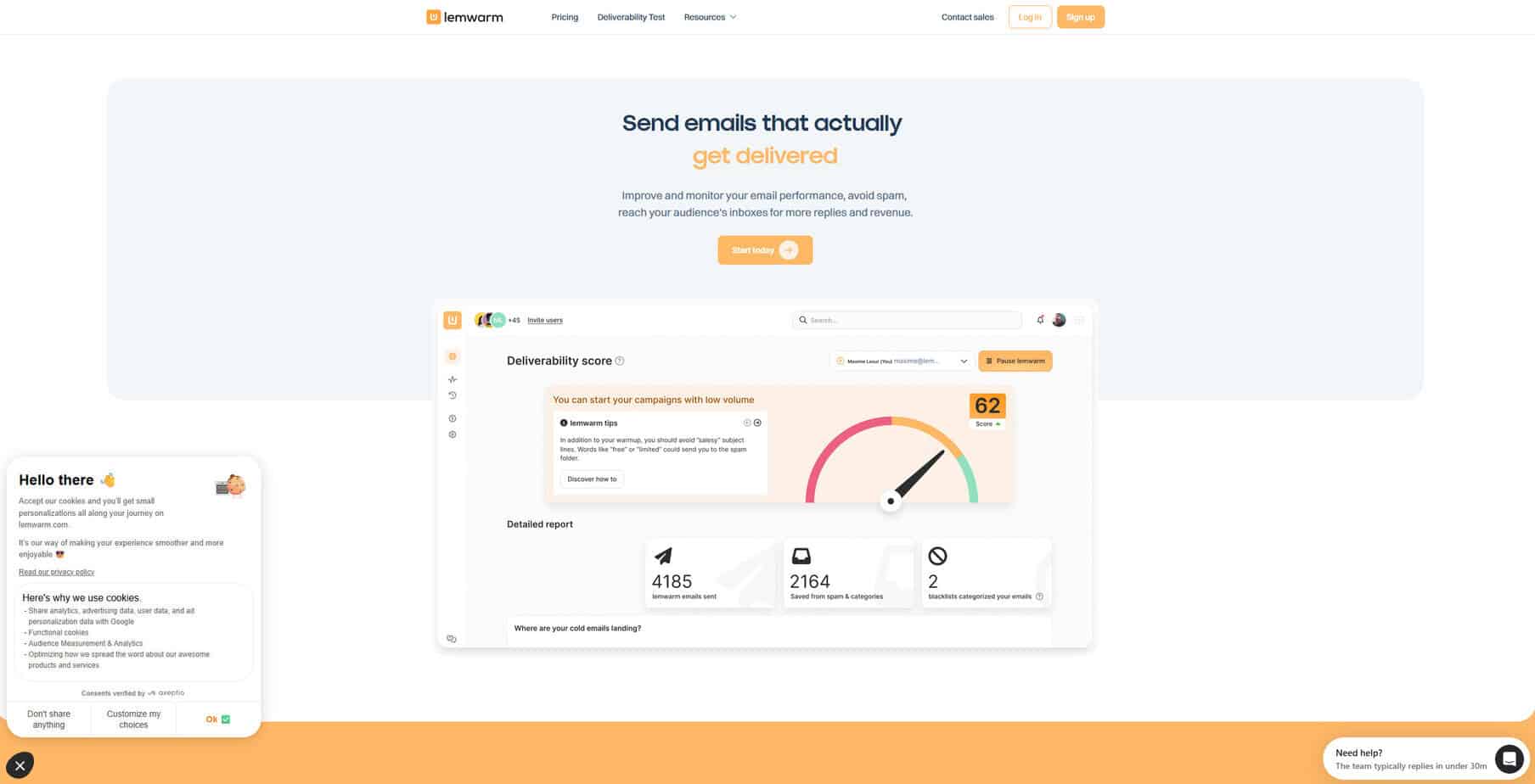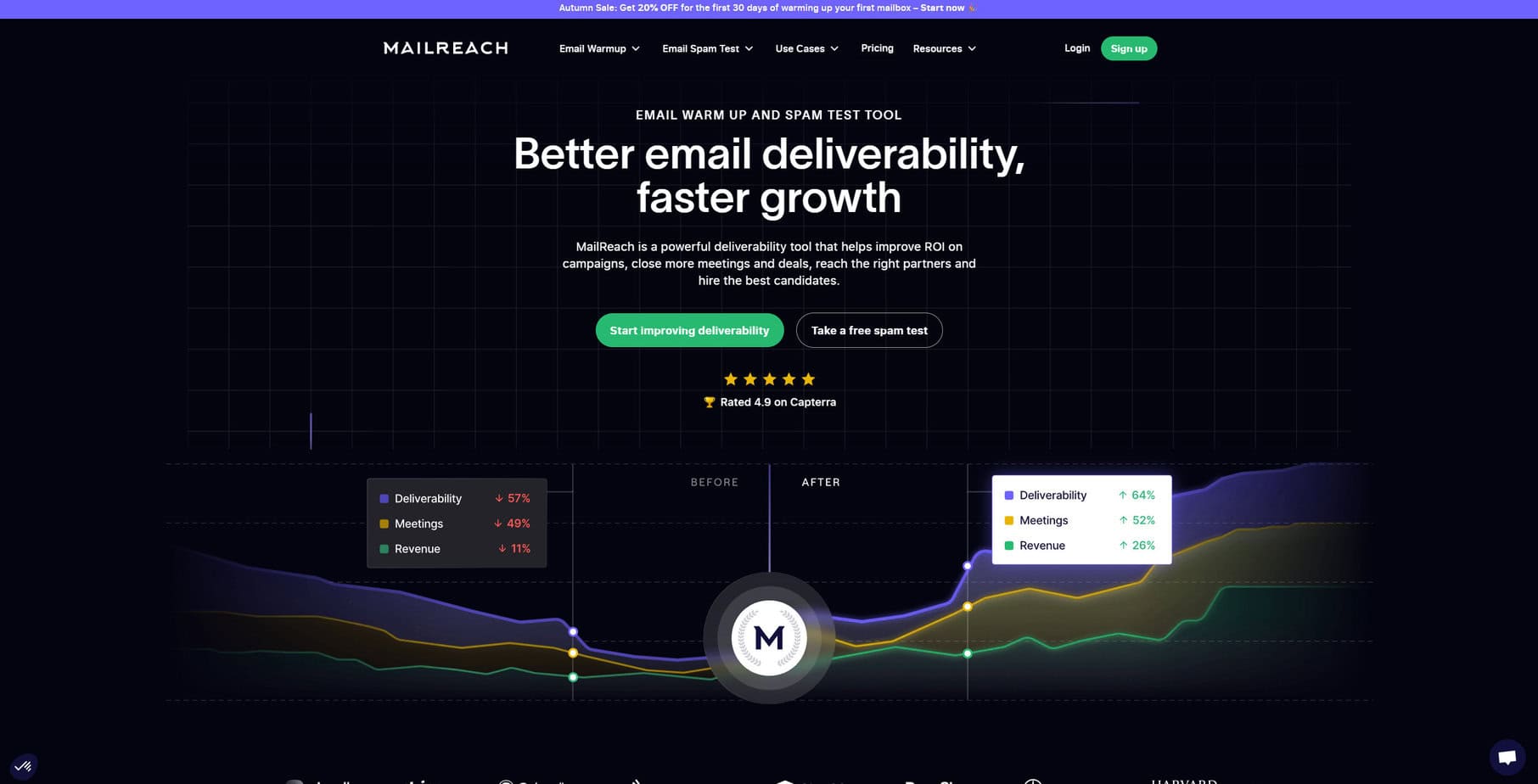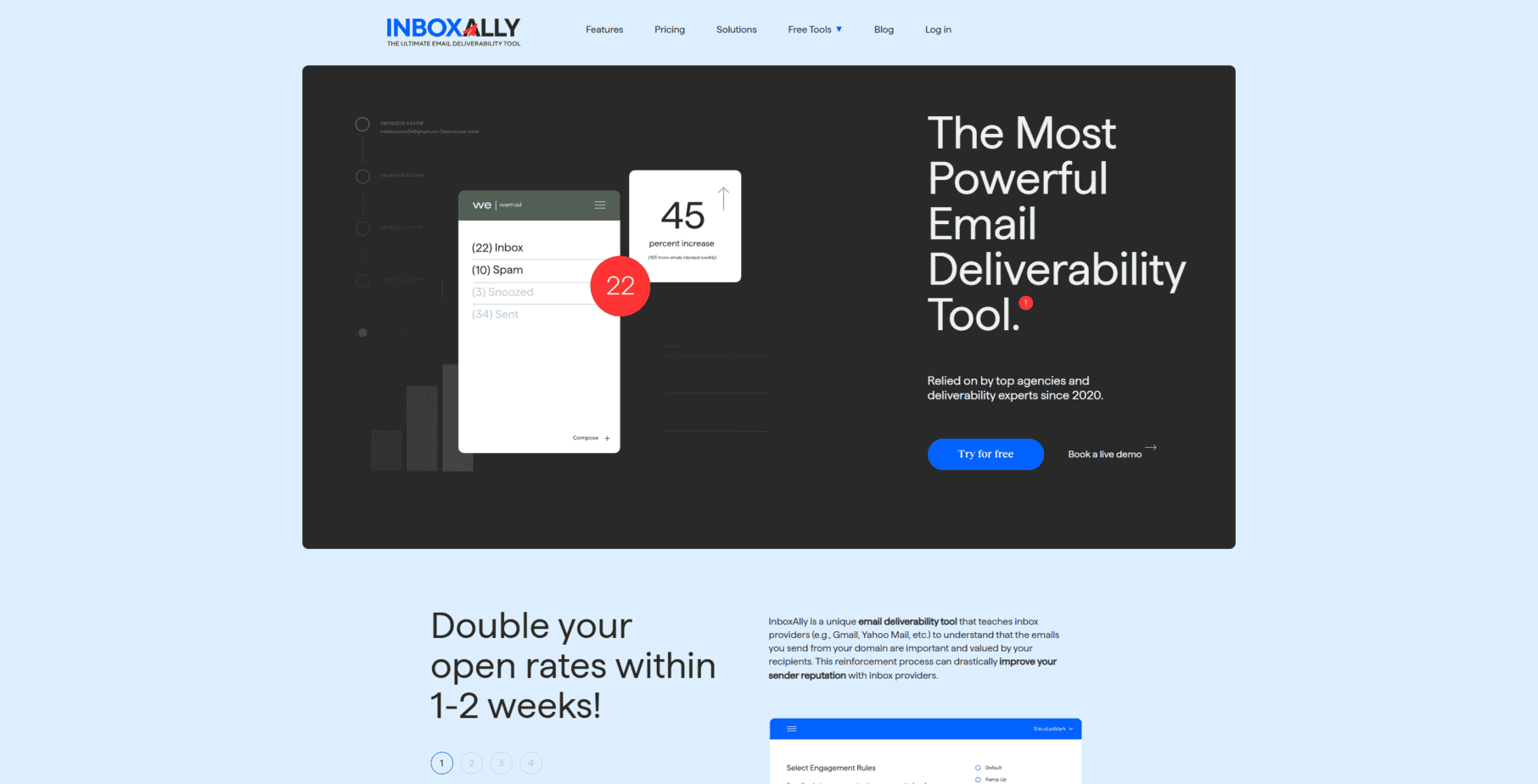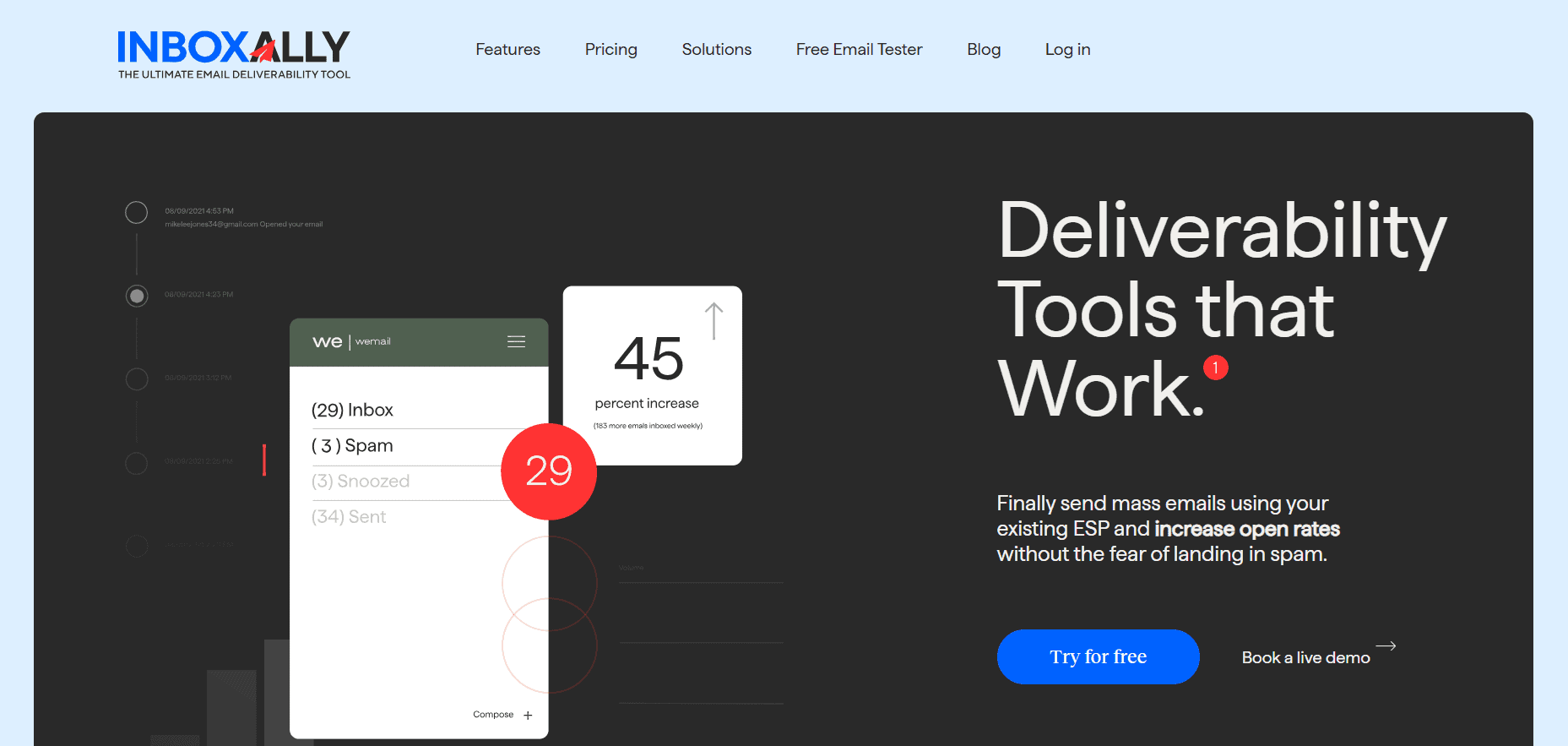- What Email Warmup Is (and Why It Became Popular)
- The First Half: The Warmup Skeptics
- The Second Half: The Warmup Believers
- Warm-up Tools to Have in Mind
- 1. Lemwarm
- 2. MailReach
- 3. InboxAlly
- What the Major Email Providers Recommend
- Best Practices for Safe and Effective Warmup (the Hybrid Approach)
- In the End, It’s Pretty Simple
Last Updated on November 28, 2025 by Ewen Finser
The cold email world is split right down the middle. Some marketers would bet their kids on that one email warmup tool that single-handedly revived their dying businesses, while others say they’re nothing more than the ShamWow of digital marketing.
I totally get the paranoia. Every major ESP now keeps a wary eye on your sender behavior (and even the tone of your content) before lending you their users’ attention for half a second during the daily doomscroll. That means any attempt to “game” the system is riskier than ever.
So the question remains: do email warmup tools actually help? It’s a fair ask because even experts can’t agree: Folderly calls them a waste of time, while MailReach and Lemwarm keep posting their “we cracked deliverability” screenshots day in and out.
So, who’s right? Let’s get into it.
What Email Warmup Is (and Why It Became Popular)
When you ignore all the buzzwords, email warmup is just you convincing ESPs that you’re an honest-to-god sender and not another sales bot with a shotgun marketing approach. Since they all track reputation, they want to see that you send gradually, get genuine engagement, and have a schedule that seems at least half-natural. That’s, unsurprisingly, exactly what warmup tools aim to do.
In the early cold email days, everyone was burning through new domains because they didn’t realize how sensitive spam filters had become. Someone eventually said, “What if we treat every new inbox like a new relationship — start small, build trust?” And lo and behold, email warmup was born.

There are two main approaches:
- Manual warmup: sending small batches of personal emails and building engagement naturally. It’s boring, but it works.
- Automated warmup: software-generated exchanges that mimic conversation between connected accounts. It’s faster, but risky if it looks synthetic.
Both aim for the same thing: reputation. But not all are created equal. If the “engagement” comes from a random new inbox in the same automated pool, inbox providers will know. Their algorithms track every send pattern, reply time, and content tone. Once it smells artificial, you’re pretty much done.
Still, when done right, email warmup works. I’ve seen senders (and been one) who recovered from the spam purgatory in a few weeks by ramping carefully and keeping interactions authentic. It’s not magic; it’s simply the common sense of good sending habits, finally automated.
The First Half: The Warmup Skeptics
Every deliverability veteran has a horror story about warm-up tools. And I get it, alright! I’ve seen domains go up in flames, too. Most early warmup systems were clunky at best, reckless at worst. They dropped your email into a giant pool of strangers’ inboxes and bounced fake messages around like ping-pong balls. It looked impressive on the dashboard:
“1,000 warmup interactions this week!”
But Gmail and Microsoft caught on almost instantly. Their algorithms today see everything:
- Repetitive threads
- New domains talking only to other new domains
- Identical wording that smells automated
Once that pattern is clear, your “warmup” looks less like credibility and more like manipulation.
The skeptics also have a point about spam traps. I wouldn’t be shocked if major providers plant decoy inboxes inside those warmup pools just to track bad behavior. It’s the perfect honeypot: fake activity in, red flags out. And honestly, I can’t blame them. If everyone’s trying to game engagement, someone is bound to start policing it.
But here’s where I diverge from the full-blown cynics: I’ve also seen warmup work when it’s done right. Slowly, with genuine contacts and natural engagement. The logic still holds: inboxes reward consistency, authentication, and good behavior over time.
So when people say warm-up tools are useless, I get the frustration. They’ve seen the bad versions, the copy-paste automation, the fake replies, the false sense of progress. But the truth is simpler: ESPs don’t hate warmup; they hate being tricked. If your activity looks real, it usually works.
The Second Half: The Warmup Believers
Here’s where the debate gets interesting, because for every skeptic claiming warmup is dead, there’s another marketer doubling their open rates. And from what I’ve seen, both camps are kind of right.
The logic behind warmup still makes sense: inboxes reward consistent sending and genuine engagement. You can call it warmup, reputation building, or whatever you like, the principle hasn’t changed in years. When you ramp volume slowly and send to trusted contacts, email service providers start trusting you. It’s that simple.
But this is more than just theory. Agencies running cautious, data-backed warmups, like Hailo Digital, went from 35% to 90% open rates just by slowing down and building a track record the old-fashioned way. No hacks or spammy pools. They realized that clean sending and proper domain setup gave them a system that looked human, and just went with it. That’s it!
Other tools like InboxAlly have automated that same logic, but even smarter. They use real inboxes instead of recycled accounts and achieve engagement has a much bigger impact. The emails get opened, replied to, sometimes even marked as important, all the things that tell an algorithm, hey, this sender’s legit. That’s the side of automation that makes sense to me.
I’m not saying every warmup tool nails it. Most don’t. But when the system mirrors genuine behavior, the results tend to speak for themselves. The skeptics aren’t wrong to be cautious; the problem is just that the market’s flooded with lazy products.
Done right, warmup isn’t just a cheap trick but a mindset, and if you treat it like that (not as a loophole), it can absolutely turn your deliverability around.
Warm-up Tools to Have in Mind
When you look under the hood of most warmup tools, you start to see why the results vary so wildly. On the surface, they all promise the same thing: better deliverability, fewer spam flags, smoother sending (duh!). But how they get there is what determines how well they do it. Below, I’ll mention a few that I find are the best.
1. Lemwarm

Lemwarm built its name on automation done right (or at least, mostly right). It uses a Smart Content Algorithm to generate unique messages and a Smart Cluster that personalizes emails around your industry. It’s intuitive, lightweight, and to be fair, I think it’s one of the easiest tools to get a hang of if you’re just starting out.
The Good:
- Quick setup and smooth automation
- Personalized, industry-aware content via Smart Cluster
- Solid entry point for understanding how warmup works
The Bad:
- Still runs on shared warmup pools, so some repetition is inevitable
- Gmail can see those patterns over time, which limits longevity
If I had to sum it up, Lemwarm’s the on-ramp to good deliverability and a solid place to start before you move into more advanced tools.
2. MailReach

MailReach has a slower, more data-driven approach. It connects straight to verified inboxes from Google Workspace, Outlook, and Zoho, and that alone gives it more credibility in the eyes of inbox algorithms. I’ve personally used MailReach with slow, methodical ramp-ups and have managed to maintain good inbox placement.
The Good:
- Peer-to-peer engagement through verified, active inboxes
- Real-time deliverability and reputation tracking
The Bad:
- You need to be cautious. If you crank the volume too quckly you’ll ruin the effect
- It’s still automation, so it needs active oversight to stay natural
I see Mailreach as a good middle ground: the tool you use when you don’t want to break the bank with deliverability. It’s not as advanced as what I’ll get into next, but it’s proof that intentional warmup still works.
3. InboxAlly

InboxAlly’s the one I reach for when things go south, and the one I keep an eye on almost daily. It doesn’t simulate engagement; it creates it. Your emails go to real monitored inboxes across Gmail, Outlook, and Yahoo, where they’re opened, read, and occasionally replied to by real users, which is exactly the kind of behavior ESPs want to see.
Check out our full InboxAlly review here: My 2025 InboxAlly Review: Does this help with email deliverability?
InboxAlly is the comprehensive suite I need to solve challenging deliverability problems across the board. It's like a triage hub for diagnosing and fixing email deliverability rates in one dashboard. I've tried a lot of tools, but this is the one I've stuck with.
The Good:
- Real human-like engagement instead of algorithmic loops
- Comprehensive data from Gmail, Outlook, and Yahoo
- Live inbox placement insights that show exactly where your emails land
The Bad:
- Pricier than most tools
- Works best when you’re already sending responsibly, it won’t fix sloppy campaigns
Others like Instantly or Smartlead lean heavily on volume over nuance, which works right up until it doesn’t.
At the end of the day, warmup isn’t about whether it “works.” It’s about how it’s done and what kind of behaviour they show. The closer your it is to an active sender, the more the inbox trusts you and the longer that trust lasts.
What the Major Email Providers Recommend
If you ignore all the keyboard-warrior stuff in the cold email world, the big inbox providers are surprisingly clear about what they want.
Microsoft’s guidance is as clear as day: start slow, build gradually, and make sure your authentication game is airtight. SPF, DKIM, DMARC, you know the drill, so I won’t bore you with it.
Google is even more direct. Send first to engaged contacts, meaning people who actually open, click, and reply. What they don’t want is automation pretending to be engagement. You can also use Postmaster Tools to check a ton of compliance data (although its latest update ditched the reputation score).
Across all of them, the same idea repeats: they reward genuine sending practices. It’s a simple concept, but somehow still rocket science for half the internet.
Best Practices for Safe and Effective Warmup (the Hybrid Approach)
If I had to pick one approach that works every time, it’s the hybrid one: part human discipline, part smart automation. Every successful sender I know runs their warmup this way.
Once basic authentication is done, I usually start with 2–5 emails a day and only bump the volume every few days. It’s kind of like stretching before a workout —you’re conditioning your domain but still not pushing it to its limits. In this stage, send to engaged contacts only, use real conversations, and personalize even the short stuff. Every open, click, or reply tells Gmail you’re alright.
Keep an eye on your deliverability, not just open rates. Watch where your messages land. Inbox? Spam? Promotions? Google Postmaster, MailReach’s reputation score, or InboxAlly’s inbox placement dashboard help you spot issues before they become a huge problem. I especially like InboxAlly for that last part because seeing exactly where emails land gives you leverage most senders don’t have.
This is important: don’t stop warming up once your campaign goes live. Even old domains need maintenance, so keep the process on in the background, and your reputation will be in top shape.
I hope that this has made it obvious that warmup isn’t something you “finish.” You need to implement it into your long-term sending habits. A natural pattern is what inboxes love, and the more your activity looks like it, the better your reputation gets over time.
In the End, It’s Pretty Simple
If you take anything from this, let it be this: warmup isn’t a checkbox before your “real” campaign starts. It’s part of an ongoing habit you’ll have to stick with if you plan to keep scaling your outreach. Keep it running, keep it real, and stop looking for shortcuts.
Personally, I’ve seen what happens when people overthink deliverability. They tweak, hack, and then blame the tools when their reputation goes belly-up. So play it simple: authenticate properly, send good emails, and use something like InboxAlly to keep things in check
You don’t need tricks. You just need to look like a person who can be trusted.


